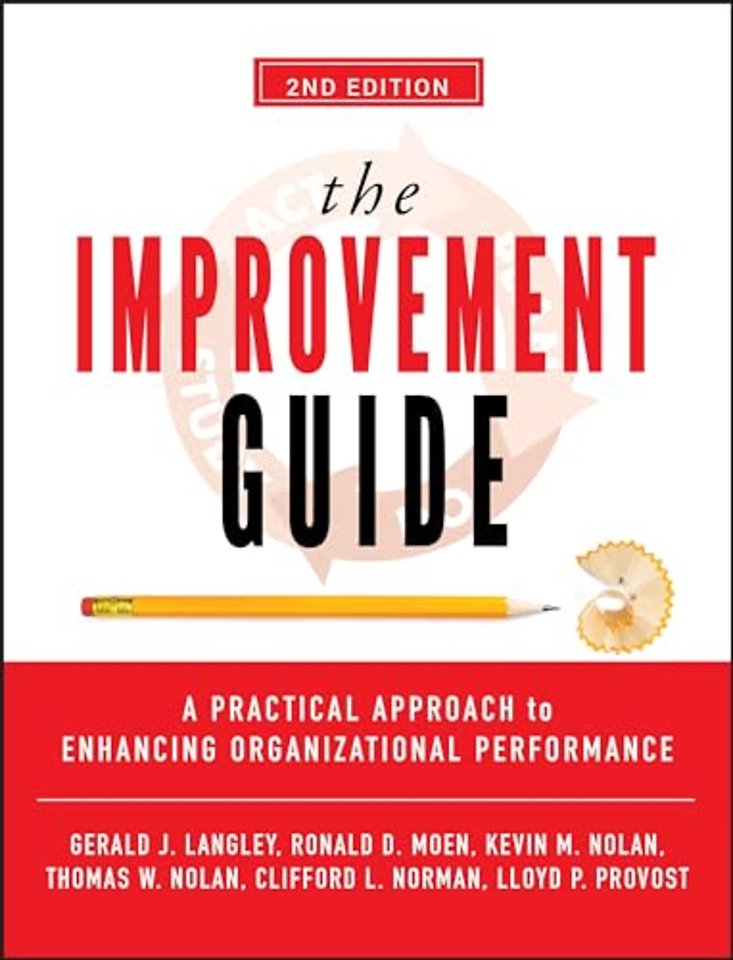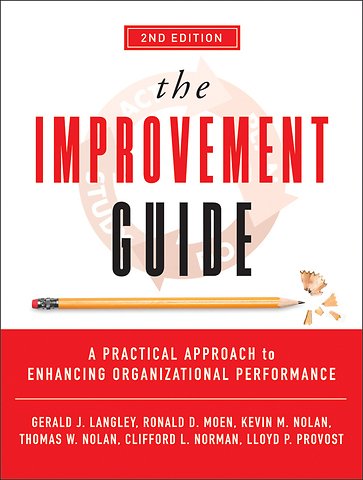The Improvement Guide
A Practical Approach to Enhancing Organizational Performance
Samenvatting
This new edition of this bestselling guide offers an integrated approach to process improvement that delivers quick and substantial results in quality and productivity in diverse settings. The authors explore their Model for Improvement that worked with international improvement efforts at multinational companies as well as in different industries such as healthcare and public agencies. This edition includes new information that shows how to accelerate improvement by spreading changes across multiple sites. The book presents a practical tool kit of ideas, examples, and applications.
Specificaties
Inhoudsopgave
Preface.
Acknowledgments.
The Authors.
Introduction: The Improvement Guide, Second Edition.
PART ONE: INTRODUCTION TO IMPROVEMENT.
Chapter One: Changes That Result in Improvement.
Principles of Improvement.
The Model for Improvement.
Key Points from Chapter One.
Chapter Two: Skills to Support Improvement.
Supporting Change with Data.
Developing a Change.
Testing a Change.
Implementing a Change.
Spreading Improvements.
The Human Side of Change.
Key Points from Chapter Two.
Chapter Three: Improvement Case Studies.
Case Study 1: Improving the Morning Meeting.
Case Study 2: Improving Service in a Dental Offi ce.
Case Study 3: Improving Methods for Teaching Biology.
Case Study 4: Contamination in Shipping Drums.
Case Study 5: Reducing Energy Use in School.
Key Points from Chapter Three.
PART TWO: METHODS FOR IMPROVEMENT.
Chapter Four: The Science of Improvement.
Profound Knowledge.
Milestones in the Development of Profound Knowledge.
Key Points from Chapter Four.
Chapter Five: Using the Model for Improvement.
What Are We Trying to Accomplish?
How Will We Know That a Change Is an Improvement?
What Changes Can We Make That Will Result in Improvement?
The Plan–Do–Study–Act Cycle.
Using the Cycle to Build Knowledge.
Key Points from Chapter Five.
Chapter Six: Developing a Change.
Some Typical Problems in Developing Changes.
Reactive Versus Fundamental Change.
Theory for Change.
Methods for Developing Fundamental Change.
Key Points from Chapter Six.
Chapter Seven: Testing a Change.
Applying the Science of Improvement to Testing.
Principles for Testing a Change.
Designs for Testing a Change.
Strategies for Testing.
Key Points from Chapter Seven.
Chapter Eight: Implementing a Change.
Testing a Change.
Implementing a Change.
Implementation as a Series of Cycles.
Implementing Changes to Achieve and Maintain Improvement.
The Social Aspects of Implementing a Change.
Key Points from Chapter Eight.
Chapter Nine: Spreading Improvements.
A Framework for Spread.
Phase for Organizational Readiness for Spread.
Phase for Developing an Initial Spread Plan.
Phase for Executing and Refi ning the Spread Plan.
Key Points from Chapter Nine.
Chapter Ten: Integrating Methods for the Improvement of Value.
Eliminating Quality Problems.
Reducing Costs While Maintaining or Improving Quality.
Expanding the Expectations of Customers to Increase Demand.
Developing an Environment Conducive to the Improvement of Value.
Key Points from Chapter Ten.
Chapter Eleven: Improving Large or Complex Systems.
Project Setup and Management.
Understanding the System and Developing High–Impact Changes.
Testing and Learning Systems.
Key Points from Chapter Eleven.
Chapter Twelve: Case Studies of Improvement Efforts.
Case Study 1: Reducing the Occurrence of No–Fault–Found Components.
Case Study 2: Improving the Drill Process.
Case Study 3: Reducing Infection and Mortality Rates in a Pediatric Intensive Care Unit.
Case Study 4: Improving Safety at a Manufacturing Plant.
Case Study 5: Improving the Credentialing Process at CareOregon.
Case Study 6: Improving Sales at a Specialty Chemical Company.
Key Points from Chapter Twelve.
PART THREE: IMPROVING VALUE AS A BUSINESS STRATEGY.
Chapter Thirteen: Making the Improvement of Value a Business Strategy.
Building the System of Improvement.
Key Points from Chapter Thirteen.
Chapter Fourteen: Developing Improvement Capability.
Developing Improvement Capability in the Workforce.
Organization to Support the Focus on Improvement.
Development of Other Capabilities.
Key Points from Chapter Fourteen.
Sample Agendas for Getting Started, Sponsors, and Improvement Advisors.
Development of Internal Improvement Advisors: Topical Agenda.
APPENDIXES.
Appendix A: A Resource Guide to Change Concepts.
How to Use Change Concepts.
The Change Concepts.
Appendix B: Tools and Methods to Support Improvement.
Methods and Tools for Viewing Systems and Processes.
Methods and Tools for Gathering Information.
Methods and Tools for Organizing Information.
Methods and Tools for Understanding Variation.
Methods and Tools for Understanding Relationships.
Methods and Tools for Project Management.
Standard Forms for Improvement Projects.
Appendix C: The Model for Improvement and Other Roadmaps.
Fundamental Questions for Improvement.
Alternative Roadmaps for Improvement Projects.
Summary.
Notes.
Index.
Anderen die dit boek kochten, kochten ook
Net verschenen
Rubrieken
- aanbestedingsrecht
- aansprakelijkheids- en verzekeringsrecht
- accountancy
- algemeen juridisch
- arbeidsrecht
- bank- en effectenrecht
- bestuursrecht
- bouwrecht
- burgerlijk recht en procesrecht
- europees-internationaal recht
- fiscaal recht
- gezondheidsrecht
- insolventierecht
- intellectuele eigendom en ict-recht
- management
- mens en maatschappij
- milieu- en omgevingsrecht
- notarieel recht
- ondernemingsrecht
- pensioenrecht
- personen- en familierecht
- sociale zekerheidsrecht
- staatsrecht
- strafrecht en criminologie
- vastgoed- en huurrecht
- vreemdelingenrecht







